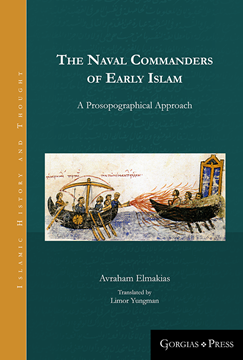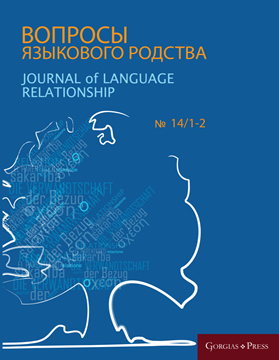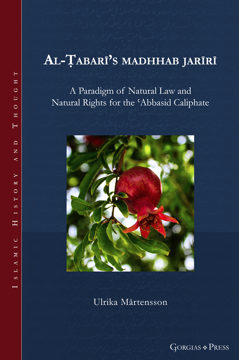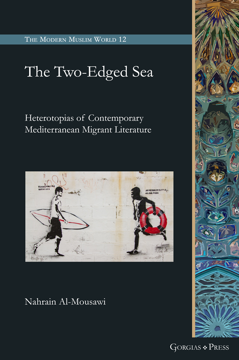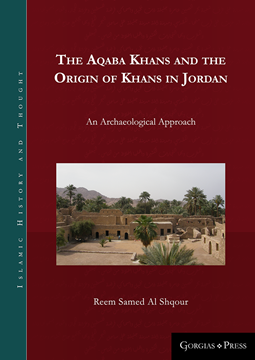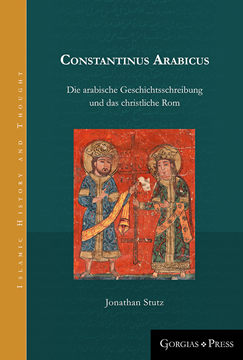The Naval Commanders of Early Islam
A Prosopographical Approach
Series: Islamic History and Thought 16
ISBN: 978-1-4632-0645-1
Translated from Hebrew, this groundbreaking study sets out to answer one simple question: who were the commanders of the early Islamic navy? Using the prosopographical method, Elmakias unearths fresh information about early Islam's inexperienced and pioneering naval commanders. Through their fascinating biographies, we learn about the people who led the Islamic navy during the first conquests of the Islamic empire and helped to realise the spread and expansion of Islamic influence.
$114.95 (USD)
Journal of Language Relationship 14/1-2
Volume 14/1-2
Series: Journal of Language Relationship 14/1-2
ISBN: 978-1-4632-0648-2
The Journal of Language Relationship is an international periodical publication devoted to the issues of comparative linguistics and the history of the human language. The Journal contains articles written in English and Russian, as well as scientific reviews, discussions and reports from international linguistic conferences and seminars.
$69.00 (USD)
Al-Ṭabarī’s madhhab jarīrī
A Paradigm of Natural Law and Natural Rights for the ʿAbbasid Caliphate
Series: Islamic History and Thought 30
ISBN: 978-1-4632-0649-9
The book analyses all extant works by Ibn Jarir al-Tabari (d. 224/839–310/923), referring to their individual methodologies; their legacy as al-madhhab al-jariri; and their scholarly and socio- political context. Through the study of al-Tabari’s works, the book addresses research debates over dating the legal and scholarly institutions and their disciplines; authorship and transmission of scholarly writings; political theory and administration; and ‘origins’ of the Qur’an and Islam.
$135.00 (USD)
The Two-Edged Sea
Heterotopias of Contemporary Mediterranean Migrant Literature
Series: Gorgias's Modern Muslim World 12
ISBN: 978-1-4632-4372-2
Much Mediterranean migrant literature captures the Mediterranean’s fossilized binaries, North and South. But, The Two-Edged Sea also reveals that one inheres within the other. While the book explores two Mediterraneans, with asymmetrical power relations that reflect the sea’s northern and southern shores, it also delves into how they have been in dialogue with each other, effectively deconstructing the binary. Charting undocumented journeys from the Mediterranean’s southern shores, the book contributes both to discourse on migration literature and the current resurgence of the study of seas, while advancing the idea of the Mediterranean as both a dividing border and unifying contact zone.
$112.00 (USD)
The Aqaba Khans and the Origin of Khans in Jordan
An Archaeological Approach
Series: Islamic History and Thought 9
ISBN: 978-1-4632-0651-2
A diachronic study of the development of Aqaba castle, an important Islamic khan at the junction of two major pilgrim routes, both based on Arabic and Crusader sources and the results of the excavations undertaken by Ghent University in Aqaba.
$208.00 (USD)
Constantinus Arabicus
Die arabische Geschichtsschreibung und das christliche Rom
Series: Islamic History and Thought 4
ISBN: 978-1-4632-0652-9
Die folgende Studie beschäftigt sich mit der Rezeption Konstantins in der arabischen Historiographie, sowoh christlicher- als auch muslimischerseits. Eine genauere Analyse der Texte wird zeigen, wie die Geschichte des ersten christlichen Kaisers eine Projektionsfläche für Identitätskonstrutkionen werden konnte, auch über Religionsgrenzen hinaus.
$178.00 (USD) $142.40 (USD)
